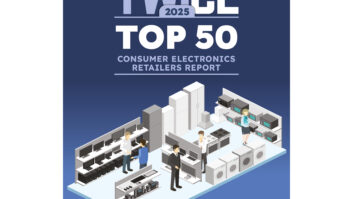What’s that sucking sound? It’s the sound of the continuing contraction of options available to U.S. consumer electronics dealers, distributors, resellers and manufacturers to obtain product distribution financing from third-party financiers.
In August 2003, the GE Commercial Finance unit of General Electric agreed to acquire most of AEGON NV’s Transamerica Finance Corp. for $5.4 billion in cash. Included in the sale were units that specialize in inventory floor plan finance, equipment finance and leasing, real-estate finance, international structured finance and commercial technology, amounting to managed assets of approximately $8.5 billion.
The acquisition was just one of a number of moves made by national commercial finance service providers that have historically served the CE and computer products and peripherals industries in the U.S. Consider the following relatively recent events in this continuing consolidation:
- Bank of America’s Distribution Finance Group (formerly Westinghouse Credit Corp., Chrysler First Commercial Corp and NationsCredit), which also served the CE and computer products and peripherals industries, was dissolved in June 2000.
- Mercedes Benz Credit Corp. launched and folded a subsidiary that focused on the CE industry in the late 1990s.
- GE Commercial Finance purchased Deutsche Financial Services in September 2002 for $2.9 billion.
- IBM Global Finance announced in 2003 a significant policy change restricting extensions of credit to commercial customers who purchase and resell or distribute IBM-branded products. This restricted the number of commercial customers who may have been served by this lender in the computer products and peripherals industry.
- Several years back, Whirlpool Financial sold its in-house dealer and distributor-financing arm to Transamerica. Now that GE has acquired Transamerica, Whirlpool dealers and distributors may be financed with funding provided by the finance arm of a major white-goods competitor.
Buying groups, distributors, dealers, value-added resellers (VARs), resellers and manufacturers should be concerned about this consolidation for the following reasons:
Loss of choice. For any industry, the ability to choose from several national third-party product distribution financiers is simply common sense. Competition for these opportunities keeps costs down and encourages responsiveness to industry distribution channels.
Concentrations of credit risk. Prior to the consolidation, it was not uncommon for financiers to establish separate credit lines for the same commercial borrower. These separate lines of credit were typically established by product line, with each financier financing the purchases of product for resale from different manufacturers for the same dealer/reseller and/or distributor.
However, a dealer/reseller that, for example, previously maintained three separate credit lines with three different companies (say $750,000, $750,000 and $500,000), may not qualify for a $2 million cumulative credit line with one financier.
Reduction in available third-party credit. The distribution channel may experience a decline in overall credit available through third-party financiers that had historically served their industry well. This constriction in available third-party credit lines could have the following consequences:
- Untimely and unnecessary delays of shipments from the manufacturer/distributor to the reseller channel
- Manufacturers and distributors increasing general and administrative costs (and, accordingly, wholesale prices) to create more robust product distribution financing departments and programs within their own companies
- Manufacturers and distributors assuming credit exposure and credit risks that they would have previously avoided, along with the greater possibility of incurring credit losses that negatively impact profitability
- Manufacturers and distributors expanding the amount and broadening the nature of their present open account credit policies. This in turn may slow their cash conversion cycle and heighten their interest expenses due to increased short-term borrowings to make up for slower cash conversions. It may also reduce inventory turns if credit restrictions limit the purchasing levels that resellers/distributors previously enjoyed with multiple credit lines.
How might the industry address these potential consequences?
Trade associations, buying groups, manufacturers and distributors should invest in attracting new third-party product-distribution financial services providers to the industry. Also, manufacturers and distributors should explore “outsourcing” by having their product-distribution financial services offerings administered by a third-party financier (“private-label” financing programs for dealers and resellers).
Criteria for selecting a legitimate third-party product distribution financier should include a well-established name and track record, competitive cost of funds, national and international footprints, and an authentic desire to service your industry and grow incrementally by becoming a trusted and essential strategic financial-services partner.
Where might retailers turn for alternatives?
The factoring industry in the United States has been servicing the product-distribution requirements of a myriad of industries for the last 100 years. Why not begin there?
Suppliers to the U.S. markets have relied upon the domestic and global credit-management and credit risk mitigation skills of third-party financiers such as GMAC Commercial Finance (GMAC CF) for years. U.S. exporters to global markets are also seeking ways to mitigate the risk on their open-term global accounts receivable.
Domestic and global supply-chain/product-distribution financiers are addressing the challenges created by the consolidation of commercial financial-services providers in the U.S. by offering risk assumption, management of accounts/collections and increased cash flow for the supply chain.
Perhaps it’s time to pursue new financial-services partners with an open mind and approach this strategic task as an opportunity to innovate.













